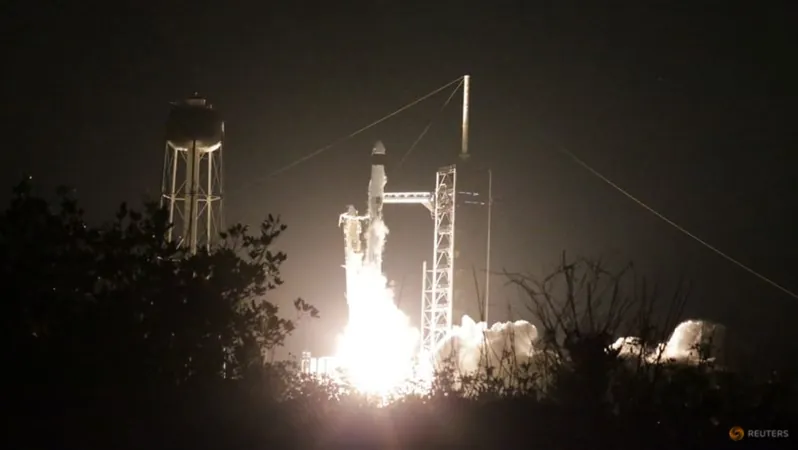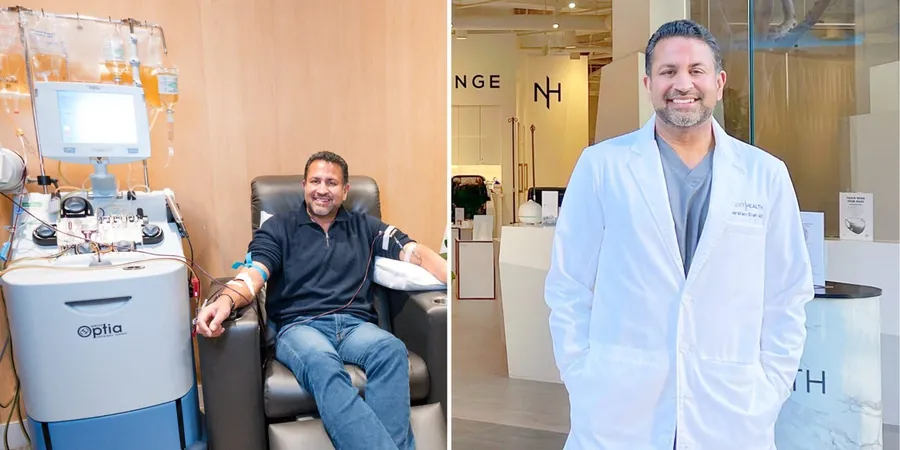
SpaceX's Landmark Fram2 Crew Makes Historic Splashdown After Groundbreaking Polar Mission
2025-04-04
Author: Jia
In a groundbreaking achievement, four private astronauts successfully returned to Earth aboard a SpaceX capsule after an unprecedented four-day journey orbiting the planet in an innovative polar trajectory. This remarkable mission marks SpaceX's sixth fully private space flight, spearheaded by tech visionary Elon Musk.
Launching from Florida on a Monday night, the crew, funded and led by Maltese investor Chun Wang, embarked on a unique circular orbit that took them from pole to pole, soaring over the icy landscapes of the Arctic and Antarctic every 40 minutes—a trajectory previously untraveled by human beings.
During their time in orbit, the team conducted an impressive 22 research experiments, primarily aimed at studying the physiological changes the human body undergoes in microgravity. Their findings could have significant implications for future long-duration space missions, particularly as humanity looks toward Mars and beyond.
The diverse crew consisted of Wang’s associates: acclaimed Norwegian film director Jannicke Mikkelsen, German robotics expert and polar scientist Rabea Rogge, and intrepid Australian adventurer Eric Philips. Each member’s unique background added valuable perspectives to the mission’s scientific endeavors.
As the Crew Dragon capsule tightened its orbit ahead of its return, it splashed down near California around noon EDT (1600 GMT), where it was promptly retrieved by a SpaceX recovery vessel. In a striking demonstration of human adaptability to space conditions, the crew exited the spacecraft without the conventional medical and support assistance typically provided to returning astronauts. This unassisted exit proved their physical readiness and showcased the potential for astronauts to emerge independently during future extraterrestrial landings—whether on the Moon or Mars.
Space travel’s impact on the body is well documented, with missions often leading to reduced bone density and muscle mass. These effects have been the subject of extensive research by NASA over the years, particularly concerning astronauts aboard the International Space Station (ISS).
As each "framonaut" emerged from the Dragon capsule, their smiles and upright stances reflected the successful culmination of their mission. "All four framonauts have safely exited Dragon unassisted," SpaceX proudly confirmed.
SpaceX continues to lead the burgeoning market for private orbital spaceflight, offering flights at approximately $55 million per seat. This emerging sector, initially dominated by wealthy tourists, is now increasingly attracting government astronauts seeking to enhance national prestige and foster domestic spaceflight capabilities. Notably, SpaceX’s Dragon is the only privately-developed capsule regularly undertaking orbital missions, while competitors like Boeing's Starliner remain delayed in development.
As space exploration evolves, the success of the Fram2 mission may herald a new era in both commercial space travel and our understanding of human adaptability beyond Earth. The implications for future missions, particularly those targeting long-duration space travel, are profound, positioning SpaceX at the forefront of this thrilling frontier.



 Brasil (PT)
Brasil (PT)
 Canada (EN)
Canada (EN)
 Chile (ES)
Chile (ES)
 Česko (CS)
Česko (CS)
 대한민국 (KO)
대한민국 (KO)
 España (ES)
España (ES)
 France (FR)
France (FR)
 Hong Kong (EN)
Hong Kong (EN)
 Italia (IT)
Italia (IT)
 日本 (JA)
日本 (JA)
 Magyarország (HU)
Magyarország (HU)
 Norge (NO)
Norge (NO)
 Polska (PL)
Polska (PL)
 Schweiz (DE)
Schweiz (DE)
 Singapore (EN)
Singapore (EN)
 Sverige (SV)
Sverige (SV)
 Suomi (FI)
Suomi (FI)
 Türkiye (TR)
Türkiye (TR)
 الإمارات العربية المتحدة (AR)
الإمارات العربية المتحدة (AR)